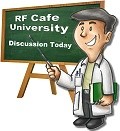|
< Previous
Next>
The Next Assembly Line Robot - Antifreeze
Antifreeze now has a new use. Scientists at the University of Minnesota have
discovered a way to exploit the surface tensions properties of ethylene glycol to
cause pairs of components with complementary shapes to be attracted to each other
and self-assemble. In an experiment, hundreds of LED chips and silicon carriers
were mixed in a container of ethylene glycol, heated, and then shaken to cause the
complementary LED/carrier shapes to mate while in the mixture. The system was then
heated to a temperature that allowed solder dollops in the carriers to melt and
make a connection to the LED die pads. After cooling and rinsing, the assembled
parts were removed and inspected. 600 assemblies were produced in just two minutes
- a 100% yield! A second and final similar step then assembled the LED/carrier pairs
onto a surface-mount package and yielded 97%. This process is being considered for
similar high volume manufacturing operations that involve parts too small to be
efficiently handled with robotic or human means.
|








 "
"